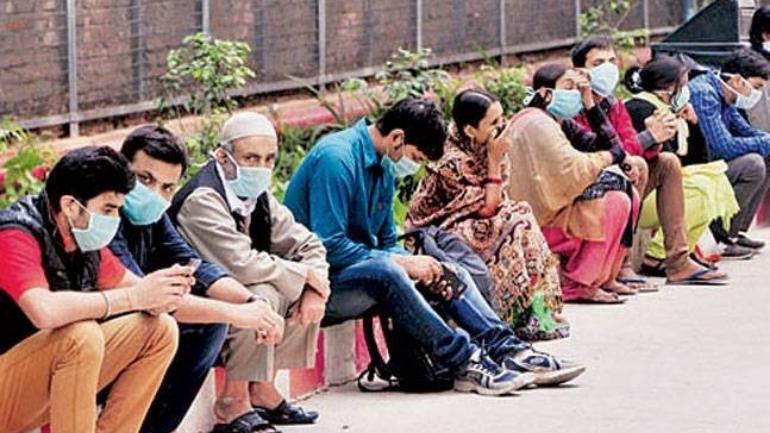A recent report in the medical journal, Lancet, claims that India has had the singular distinction in 2017, of ranking fourth in malaria cases reported globally; that is, of the 219 cases reported in 2017, 10 million cases were in India. It further noted that India would be among three countries that would struggle to eradicate malaria by 2030, given the current trajectories and the urban environment in the country that facilitates the breeding of Anopheles Stephensi, the mosquito responsible for the spread of the malaria virus.
It is a similar scenario that has caused dengue to become the fastest growing viral infection transmitted by mosquitoes, as declared by the World Health Organisation (WHO). In fact, as of today, figures show dengue to be spreading far ahead even of malaria. The worldwide incidence of dengue increased 30-fold in a 50-year period, with its prevalence shifting from a handful of countries to becoming endemic in 128 countries, including India. At the moment, dengue is endemic in all 35 states and union territories of India.
The onset of monsoon this year, saw over 700 cases of dengue being reported from hospitals in Hyderabad. High humidity levels during the retreating monsoon season in September saw Kolkata getting badly affected by the disease; while Mumbai registered a sharp rise in dengue cases in the comparatively cooler months of January -March ( 2019). With the authorities focussing their energies on controlling dengue, Delhi saw a spike in malaria, with 459 cases, even as it battled 467 cases of dengue.
Climate change and disease vectors
The 4th Assessment Report of the UN Intergovernmental Panel on Climate Change (IPCC) had shown that various arthropods carrying vector-borne disease such as ticks, mosquitoes and sandflies, have all been moving into more northern latitudes in response to global warming. In India, global warming has manifested itself in disease vectors affecting colder regions like Himachal Pradesh and Jammu and Kashmir in recent years.
The years 2012, 2015, 2016 and 2017 that were marked by dengue epidemic corresponded to a slow arrival of the monsoon, and below-normal rains in the first half, and an above normal rainfall in the second half, followed by an anomalous delayed withdrawal. 2019, too, has been no different. Such years show high maximum and minimum temperatures during the monsoon and post-monsoon periods, widespread floods and high humidity levels. Shorter winters and longer summers also enhance the transmission season and expand the geographical distribution of vector-borne diseases, since disease-carrying arthropods thrive in the range of 20-30 degrees centigrade.
AES & Japanese Encephalitis
There have been other public health emergencies too, exacerbated by poverty and malnutrition. Incredibly high temperatures in June 2019 saw Muzaffarpur in Bihar reel under a bout of acute encephalitis syndrome (AES), affecting 222 blocks of the district, as also parts of adjoining districts. A total of 440 cases, with 103 deaths were recorded in the region, with the high rate of fatalities being attributed to high temperatures, malnutrition and poverty among the patients. AES has shown a spike in recent years, and is being attributed to the prevalence of the scrub virus. The Muzaffarpur deaths are attributed to the lichi strain of the virus, with the deaths traced to a chemical found in unripe lichis that reacts in malnourished children who have lichis on an empty stomach. However, doctors are not yet clear about causes behind AES, though the early development of AES in India was found to be in line with JE ( Japanese Encephalitis).
On its part, JE has seen a spike in cases since 2010. Characterised by neck stiffness, stupor, disorientation, coma, tremors, convulsions and spastic paralysis, with 30 to 50 per cent of the survivors ending up with cognitive and neurological disabilities. The first case of JE in India was discovered in Tamil Nadu, where it remained confined until 1973, when it struck West Bengal. It then invaded 22 rice-growing states, where its carrier, the Culex mosquito, breeds in stagnant water, and spreads by feeding on infected domestic pigs, the amplifying host, and migratory birds, the natural host. JE was known to thrive in the Northeast, which presented ideal conditions for the virus. However, recent years have seen the virus become endemic in Uttar Pradesh.The disease made a comeback (after two decades) in Odisha in 2012, leaving 24 dead, amid 274 cases. The same year, Uttar Pradesh reported 1139 confirmed cases. In July 2016, Manipur faced several JE-related deaths too.
JE has a tendency to invade new areas that host stagnant water and paddy fields, which are its traditional habitat. Of late, as revealed by the National Vector Borne Disease Control Programme ( NVBDCP), sub-groups of the Culex mosquito have been found in vegetation along the Yamuna, where they are infecting people in Haryana. Between 2011-2016, JE cases rose by 210 per cent, with fatalities rising by 181 percent.
H1N1 flu
The H1N1 virus first made its appearance in India, in 2009, during the global H1N1 pandemic, that lasted until 2010. Generally referred to as the swine flu virus, the H1N1 virus which affects humans is, however, different from that affecting hogs. The H1N1 flu virus struck again in 2015, with 42,592 cases and 2990 deaths being recorded throughout India. In 2017, there was another major H1N1 wave, with 38,811 cases and 2270 deaths.
Warmer temperatures and high humidity have been major reasons behind the rise in H1N1 over the last decade. Although the numbers affected in 2018 and 2019 are much lower, it is nevertheless a cause for concern. In 2019, there were 26,000 cases and over 1000 deaths all over the country. Although H1 N1 flu is symptomatic of any other seasonal flu, causing fever, chills, sore throat, body-ache, headache, runny nose and fatigue, it can cause complications like pneumonia and can be fatal for the very young and elderly. H1N1 is often fatal for those with asthma, lung, blood, endocrine or heart disorders, or a weakened immune system. This year, Maharashtra, Rajasthan, were the worst hit, with over 200 deaths each, followed by Madhya Pradesh, Gujarat, and Karnataka, with over 100 deaths. The disease also took its toll in Jammu & Kashmir, Delhi, Punjab, Himachal Pradesh, Chhattisgarh, Kerala, Uttar Pradesh and Bihar, with fatalities everywhere.
Leptospirosis
Nearly unknown in India until a few years ago, leptospirosis or rat fever reared its ugly head in parts of the country in 2017, with flooding and inundation becoming commonplace in many urban centres. In 2018, there was a fatality in Pune, and several cases of leptospirosis reported from all over Maharashtra, Gujarat and Karnataka. Mumbai reported 218 cases in 2018, and 102 cases in 2019. There were several cases reported from Surat, Mangaluru, Dakshin Kannada too.
Caused when infected rat and animal urine mixes with floodwaters, leptospirosis is caused by the Leptospira virus. Symptoms include sudden fever, headache, muscle pain, chills, red itchy eyes, difficulty urinating, a skin rash, nausea, vomiting, and diarrhoea. As the disease progresses further, a patient experiences bleeding from the nose and mouth, cardiac and respiratory failure.
Preventive measures
From all accounts, climate change is here to stay. But where diseases are concerned, disease vectors thrive in unhygienic conditions and stagnant water. Since prevention is always better than cure, we need to ensure that ticks, mosquitoes and rodents never meet the ideal conditions to breed and multiply. The Swacchh Bharat Mission is a step in the right direction. Let us step up and fight disease by keeping our homes and environs clean.


 [/column]
[/column]